
One thing's for sure: When it comes to beauty and variety, it's tough to beat the buntings. They are found in a wide array of North American locations, from the high arctic tundra to the low country of the Southeast. The coloration of these birds is as distinct as their ranges. Males show everything from stark black and white palettes to a rainbow of colors. Females tend to have more subtle hints of coloring. Some buntings are related to sparrows or longspurs, while others are kin to cardinals and grosbeaks, yet another sign of their diversity. Learn more about these bright birds and where to find them.
Blue Beauties
The most widespread group, indigos are the buntings of the East. Their core breeding range stretches from southern Quebec to central Florida and west all the way to Arizona and New Mexico. Look for bright blue males singing cheery paired notes from perches in brushy fields or woodland edges.
Predominately brown, tan, and white, females and young males show hints of blue feathering. Like most other buntings, male indigos molt into a more subdued winter plumage. During migration, the blotchy birds can play tricks on even the most talented birder's eyes, as the feather coloring doesn't match up with anything in field guides. Indigo buntings will occasionally visit thistle seed feeders, so be on the lookout, especially in spring.
Jewels of the West
This story is from the {{IssueName}} edition of {{MagazineName}}.
Start your 7-day Magzter GOLD free trial to access thousands of curated premium stories, and 9,000+ magazines and newspapers.
Already a subscriber ? Sign In
This story is from the {{IssueName}} edition of {{MagazineName}}.
Start your 7-day Magzter GOLD free trial to access thousands of curated premium stories, and 9,000+ magazines and newspapers.
Already a subscriber? Sign In
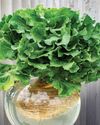
Basics of Hydroponics
Use these top tips and plant picks to have a successful soil-free garden
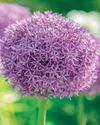
Rooted in Resilience
These hardy perennials will thrive in most zones
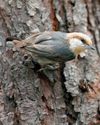
Social and Supportive
Brown-headed nuthatches take a helpful approach to raising their young

All About Owl Pellets
And why you should give a hoot about them
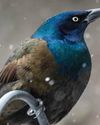
Ask the Experts
Advice from our pros about houseplants, bird feeding and more

BRING THE OUTDOORS IN
Making a terrarium is about as close as you can get to a Zen DIY project. Once you have gathered the proper materials and squared away your plant selections, it's as simple as layering it all together and watching your mini ecosystem thrive. Here, I'll walk you through my foolproof process and cover all the required elements for good filtration, healthy soil, strong root growth and resistance against fungus and disease.

GROW THIS. NOT THAT
Six easy-to-grow houseplants—and six that may not be the right choice for you
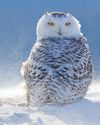
Winter MAGIC
Forecasts may be frigid, but grab your binoculars because birding opportunities are still incredible

Sense or Nonsense? - Why some birds can taste and smell - but others can't
Does a porcelain berry taste like a blueberry to a gray catbird? Does a block of lard smell like frying bacon to a northern flicker? The short answer is no. While some avian species do have a well-adapted sense of taste or smell, they can't distinguish between flavors and odors the way humans can. They're not picking up every ingredient in the suet you put out, says José Ramírez-Garofalo, an ornithology researcher at Rutgers University in New Jersey and the director of Freshkills Biological Station in Staten Island, New York.

Maple Mania - Amazing facts about this fall foliage mainstay
Amazing facts about this fall foliage mainstay